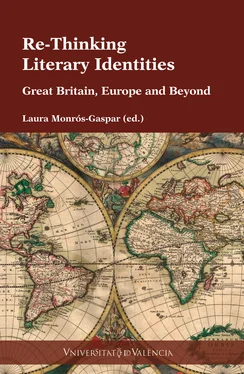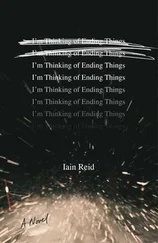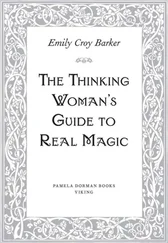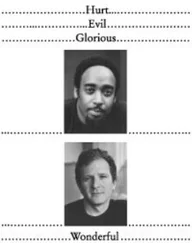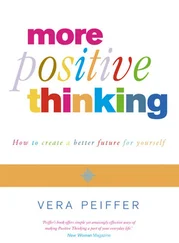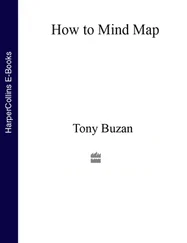que me volviera útil.
Caminando lentamente,
recogiendo corderos
y persiguiéndolos
uno contra el otro;
corriendo
al balido de su madre.
Gotas de agua,
como millones de pulgas,
que saltan del baño,
y los cuernos, cabeceando,
húmedos, fríos, temibles,
a la carrera.
Un paso más, dos,
y ya veo los rostros que ríen.
Lana en mis propias manos,
el olor de las ovejas en los dedos,
las marcas de pintura en las piernas,
barro negro y mullido en las botas,
y en la lengua mi propio idioma.
(Translation by Miguel Teruel in Frater 2016) 34
This is an insight of self-discovery, a carefully constructed epiphany of belonging, suspended in time and space by the gerunds—verbal nouns in Gaelic—until the speaker moves and acts. The scene is described in vivid sensorial detail: smells and sounds, memories of touch and vision. At first, the speaker feels cut off from her own community, excluded after the short exile of education from the actions of crofting labour. Finally, like a lamb ‘running/To a mother’s bleat’ ( uain a’ ruith/gu meulaich màth’r ), she recognises herself in her native, fragrant language.
My translation responds formally to the free verse of the original with an attempt to preserve the rhythmical and visual strategies of the poem. See for instance lines 9-10, where I have kept the line order, avoiding the inversion of the English translation. At the beginning of the poem, the Spanish provides the pronoun ‘I’, which is present in the Gaelic possessive, but not in the English version. It is reinforced (‘ Allí yo ’) with a hint at the sense of alienation, and repeated at line 16.
As for vocabulary, the word ‘fank’ ( faing ) is Scottish English dialectal; I have used ‘ ovil ’, which is general Spanish, for geographical variation was here unassailable. This also applies to the ironic prèiridh (‘prairie’ 35 ): as Anne Frater explains in her presentation, the local communal fields in Lewis—the Gaelic usual word is pàirc —are homelier and much smaller than their Canadian counterparts, and I have used ‘ prados ’ in my version, as ‘ praderas ’ would not spark up in Spanish the same connotation.
The selection of Anne Frater’s poetry for the reading session in Valencia contained the following poems, in the order in which they were read: 1. ‘ Ar Cànan ‘s ar Clò ’, ‘Our Tongue and our Tweed’, ‘ Nuestra lengua y nuestro paño ’; 2. ‘ Dà rathad ’, ‘Two Roads’, ‘ Dos caminos ’; 3. ‘ Lit’ gun Shalainn ’, ‘Unsalted Porridge’, ‘ Porridge sin sal ’; 4. ‘Aig an Fhaing’, ‘At the Fank’, ‘En el ovil’; 5. ‘Loch an t-Sìthein’, ‘Loch an t-Sìthein’, ‘Loch an t-Sìthein’; 6. ‘ A’ Buain ’, ‘Cutting/Reaping’, ‘ Cortar/Recolectar ’; 7. ‘ Bill ’, ‘Bill’, ‘ Bill ’; 8. ‘ Am Muir ’, ‘The Sea’, ‘ El mar ’; 9. ‘ Mì-Chinnt ’, ‘Uncertainty’, ‘ Incerteza ’; and 10. ‘ Ceist ’, ‘Question’, ‘ Pregunta ’. Poems 6, 8 and 9, previously unanthologised, were kindly provided by the author.
I include the English titles for reference, but I insist, as discussed above, that these versions were not read in the session, and that they will not be used in the forthcoming bilingual Gaelic-Spanish publication of the sequence. We have come to the end of my description. I sincerely hope that my translation experience and the outline of the context for contemporary Scottish Gaelic poetry will be of use, especially for newcomers to this wee white bird of a language, pajarillo blanco, eun beag geal.
1 Gaelic names of authors, institutions and concepts will be given in parentheses when this is deemed relevant.
2 The reading, and the following debate, was filmed and can be accessed at < www.youtube.com/watch?v=oBdxBU93MaU>.
3 Gairm ran to 200 issues, from Autumn 1952 to Autumn 2003 (Koch 2006: 785). In the new century, the succeeding journal Gath has seen eight issues, from 2003 to 2007 (Macleod 2010: 34).
4 For an early review of her work see MacFhionnlaigh 1992b. For language and identity in modern Scottish Gaelic poetry, see Macleod 2009; for identity and nation, see Stroh 2011, and Sassi and Stroh 2015.
5 See Frater 1997 for her contribution to Douglas Gifford and Dorothy McMillan (eds), A History of Scottish Women’s Writing , and Frater 2012 for her article with Michel Byrne on ‘Gaelic Poetry and Song’.
6 For a general introduction to Scottish Gaelic culture, see Thomson 1983; for a linguistic presentation, see Watson and Macleod 2010. See Craig 2006, Ní Annracháin 2007 and Riach 2009 for discussion of the literary effects of Devolution. For minority languages in a wider context, see Glaser 2007, King et al. 2008, Stickel 2011, and Dorian 2014.
7 Iain Crichton Smith famously translated the book into English in 1971, and Christopher Whyte published an annotated edition in 2008.
8 See < http://www.somhairlemacgilleain.org> by the Sorley MacLean Trust for a comprehensive range of information on the poet, including poems and bibliographies.
9 See < http://www.georgechay.com> for a handful of poems and his centenary celebration.
10 For an informative valuation of his contribution, see Hayes 2011.
11 The concept of community ( coimhearsnachd ) is basic in Gaelic life and literature: see Dymock 2016.
12 As a scholar and translator, see her contributions to An Anthology of Scottish Women Poets (1991) and to A History of Scottish Women’s Writing (1997), and her article on Gaelic poetry for English teachers (1994), which incorporates ‘Aig an Fhaing’, a poem by Anne Frater that shall be later explored in the chapter.
13 See his webpage < http://maoilioscaimbeul.co.uk/> for poems and bio-bibliographical information.
14 See also his translations into Gaelic of Pablo Neruda in Thomson 1990, and his pieces on Màiri NicGumaraid and Anne Frater in Gairm (1992).
15 < http://www.aonghasmacneacail.co.uk/>. See Mackay 2009 for a monographic article.
16 Sabhal Mòr Ostaig is a Gaelic medium public higher education college, now part of the UHI, University of the Highlands and Islands/Oilthigh na Gàidhealtachd agus nan Eilean. The college has been a key institution for the development of Gaelic culture since its foundation in 1973. Other Writers in Residence at SMO have been Sorley MacLean, who was one of the original founders, Aonghas MacNeacail, Angus Peter Campbell, and Rody Gorman. Meg Bateman, Senior Lecturer, has been teaching at SMO since 1998, and Maoilios Campbell is now a Part-time Lecturer. The main campuses are situated in Sleat (Slèite) in the south of the Isle of Skye, and there is an associate campus in the island of Islay (Ìle).
17 See Bateman 1997a for an appreciation of her work.
18 For commentary on her work, see MacFhionnlaigh 1992a and again Bateman 1997a.
19 ‘Window on Catalonia’, Chapman , 88 (Hendry 1998). See also Light Off Water (Pelegrí and Crowe 2007).
20 See O’Gallagher 2011 for a description of his translation experience.
21 See Ó Dúill 2011 for a description of his translation experience.
22 A selection of these poems was translated into Catalan with the author’s assistance: see Whyte 2000a.
23 María Malibrán was a legendary nineteenth-century opera singer of Spanish origin. See also Whyte’s 2011 article on the making of ‘Ceum air Cheum’, his poem about Luis Cernuda.
24 The project features fourteen Gaelic poems (by George Campbell Hay, Iain Crichton Smith, Donald MacAulay, Derick Thomson, Aonghas MacNeacail, Myles Campbell, Fearghas MacFionnlaigh, Meg Bateman, Rody Gorman and Whyte himself) chosen and reworked into English from literal translations—Whyte calls them ‘responses’—by other Scottish poets (Tracey Herd, Jackie Kay, W. N. Herbert—his version into Scots—, Robert Crawford, David Kinloch, John Burnside and Kathleen Jamie). For an informed review, see Mackay 2007.
Читать дальше
